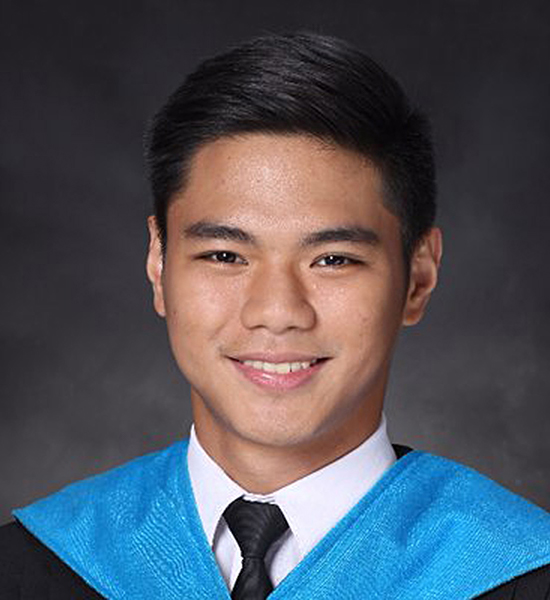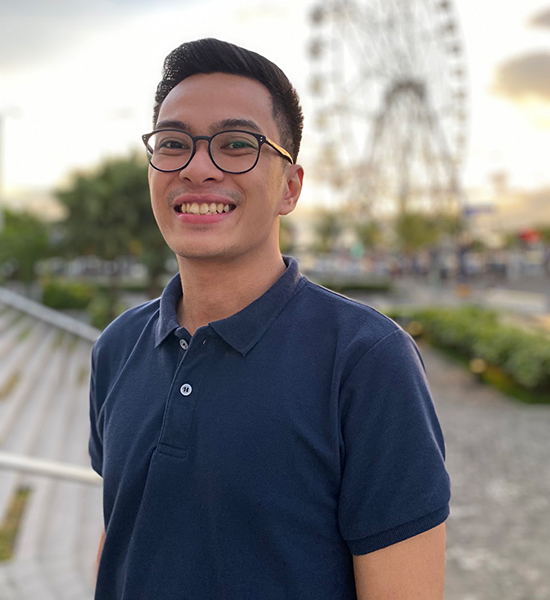Behind the frontlines: The journey of medical students today
All of this was supposedly “for the people” but I had not seen nor interacted with many since the pandemic began.
After endless piles of papers to write, books to read, and tests to take, an insidious thought grabbed me by the arm: What am I doing this for? I’ve learned plenty — yet not enough — and still, I have not helped anyone remotely. Something was eroding in me. I’d always wanted to serve as a doctor but the pandemic was leaving me nonplussed and exhausted.
It was Christmas and my school’s examination week, and I had hardly spoken to or seen any of my family members. Showering was a privilege that came every other day, and sleep, if it did come, lasted for a few minutes to an hour before friends called to wake me up.
This is what it’s like behind the white coat. Non-showering, sleep-deprived, silently studying full-time students. Surely, I was not the only one, and so I sought answers to my question from other medical students around me. The situation of our country is mercurial, to say the least.
Health care is tough — and to even aspire to get there takes colossal effort. This is what’s behind the white coat.
For Carla (not her real name), the pandemic brought fear to her family.
“As a (clinical) clerk, I am very scared to go out. Yes, I want to learn, but I am a mom more than anything else, and I don’t want to bring the virus home… I don’t want my family to get sick. I have to protect them,” Carla laments.

During the pandemic, managing her roles as a mother of two, a wife to a supportive husband, and a fourth-year medical student offered a unique cluster of struggles. Lockdown, and consequently online schooling, meant competing with time for household chores, maintaining a fantastic marriage, and of course, attending two four-hour lectures per day and studying hundreds of pages per subject.
On days she studies for exams, her husband and eldest take on roles she is temporarily unable to. “My journey in med school is the journey of my family too,” she says proudly. Armed with a master’s degree in Special Education and experiences with her own children, she pushes on to someday become a developmental pediatrician.
Battling anxiety
Alfonso Daleja, a part-time barista, and a third-year medical student, shared his battle with mental health. After being diagnosed with General Anxiety Disorder in 2018, he once again consulted a psychiatrist during the pandemic to ask for help. “It makes it harder to cope compared with others. I have to push myself to study through the lack of motivation — even when I truly want to become a doctor. I’d get burned out more often than my peers.”

Though COVID-19 and its controversial management took away opportunities to work and study, Alfonso has taken control of his situation by taking anti-depressants, exercising, and practicing mindfulness — all for the dream of becoming a psychiatrist within the medical field where “invisible” conditions like his are common, and in rural areas where health care is most inaccessible.
Mental health struggles
Similarly, Pam Lagera, a fourth-year medical student doing online rotations in the Philippines from the US, emphasized struggles with mental health. On top of anxiety from uncertainty, she also had to conform to the reversed time zones. All these, along with family members and friends suffering from COVID, contributed to tenacious social anxiety.
“Even small group discussions made me tense, sweaty, and gave me heart palpitations, even if I had prepared well for class.” This, however, only propelled her growth.

After consistently taking anti-depressants and anti-anxiety medications, learning programming skills, and improving her lifestyle, she beams that all the adversity helped shape the vision of her future practice: to participate in innovations involving the intersections of health care, wellness, and technology.
Truly, interest in public health took center stage during the pandemic, and its failures remain palpable among all Filipinos. Jared (not his real name) is a medical student whose father suffered from a severe case of COVID during the first set of his long exams.
“I had to juggle studying and taking long exams while my dad was fighting for his life back in the province. I received a call from one of my cousins during a Zoom-proctored exam. There was a real possibility my cousin was calling to tell me my dad didn’t make it. Fortunately, he did.” Jared adds that no one is truly safe until we are all safe and this is something he will carry with him as he practices medicine in the future.
Overcoming difficulties
For others, the struggle came even before the pandemic.
Darryl John Pasamba is currently a medical post-graduate intern in the Philippine General Hospital and his journey is an amalgamation of his own efforts, and the efforts of his friends, family, and mentors. After passing the boards for medical technologists, he worked for two years as an online tutor as this would offer more income for his family as the breadwinner.
Ultimately, Darryl went to medical school on the basis of a generous entrance scholarship. The next several semesters consisted of daunting adventures to collect enough money through his part-time job as an online tutor, his mom’s sari-sari store, cogent appeals, scholarships, and donations from his “medkada” and their parents.
While surviving on a meager allowance and endless promissory notes, he remained at the top of his class, earning both academic and grants-in-aid scholarships to the admiration of his classmates. “Sobrang hirap ng ginagawa ko. Nakakapagod siya. Being a med student is a full-time job,” he explained.

Things took a more difficult turn when he was confined after being diagnosed with moderately severe acute pancreatitis with an unknown etiology. He returned to the hospital for admission two more times thereafter for complications, time taken away from earning much-needed income.
With his bill reaching P100,000 each time, the benevolence of the people around him climbed even higher. His friends, mentors, and school’s department heads offered to fund his hospital fees through collective effort. A pharmaceutical company paid for his last admission, as well as the rest of his expenses for medical school to this day.
“Mahirap maging mahirap pero mas mahirap mawalan ng pangarap,” he expressed, modifying a well-known saying.
Many Filipinos have a dream but the means to reach it remain lacking. It is for this reason that Darryl now strives to provide access to free healthcare and medication for his community and envisions forming a scholarship committee one day to help those like him.

Health care is tough — and to even aspire to get there takes colossal effort. This is what’s behind the white coat.
It is an entire family sacrificing to put one child through med school. It is a parent balancing time with her children and endless studying, just to help other children in the future. It is adults and real people with their own fears and silent insecurities and crises, fighting one day at a time, to be there for people fighting for their lives. It takes money — a lot of money that an average Filipino cannot easily afford. And above all, it takes a dream.
For Carla, it is in developmental pediatrics, to be of service to children with developmental delays or disabilities. For Alfonso, it is accessible primary health and psychiatric care in rural areas. For Pam, it is to be in the forefront of advancing technology and health care. Jared hopes to improve the community and public health, and Darryl aims to give back and provide resources for those in need.
As for me, I advocate for adequate reproductive health education for men and women, better support for PWDs, and the re-integration of the elderly population into society.
It is society’s duty, our nation’s duty, to champion us, the students, and to allow our dreams to unfold. It is only our wish to help, to heal. And it is our country and the Filipino people who need this vision to come true the most.


